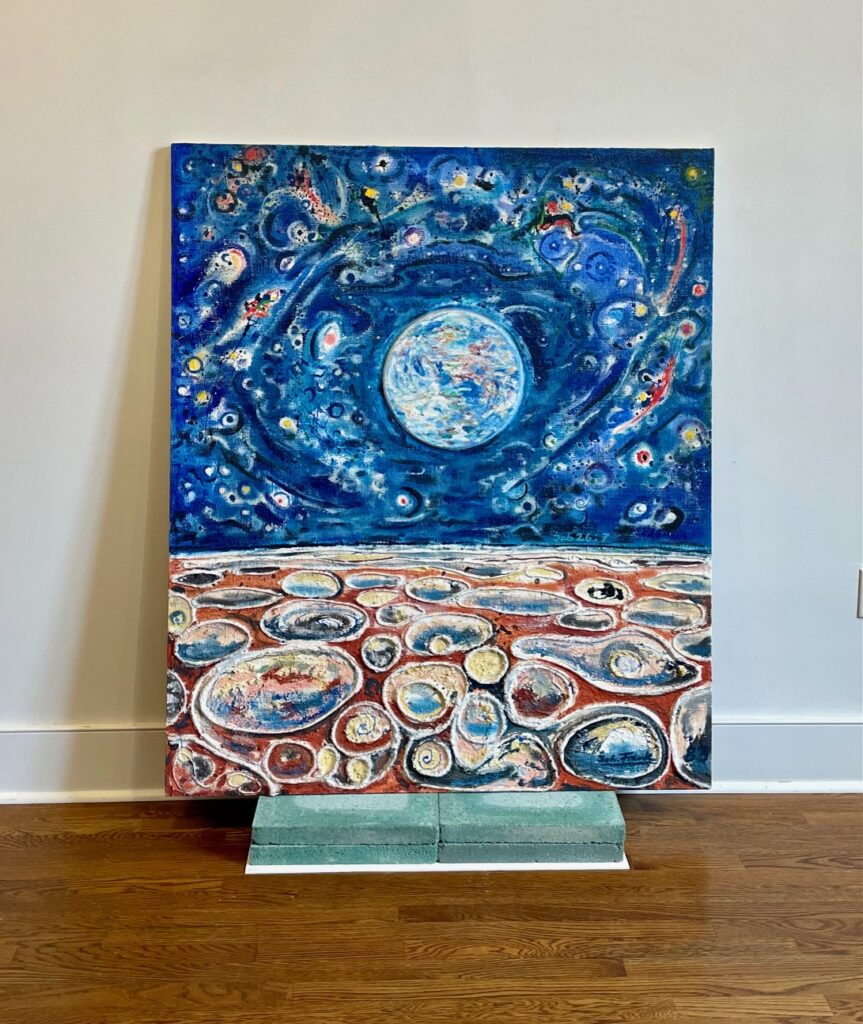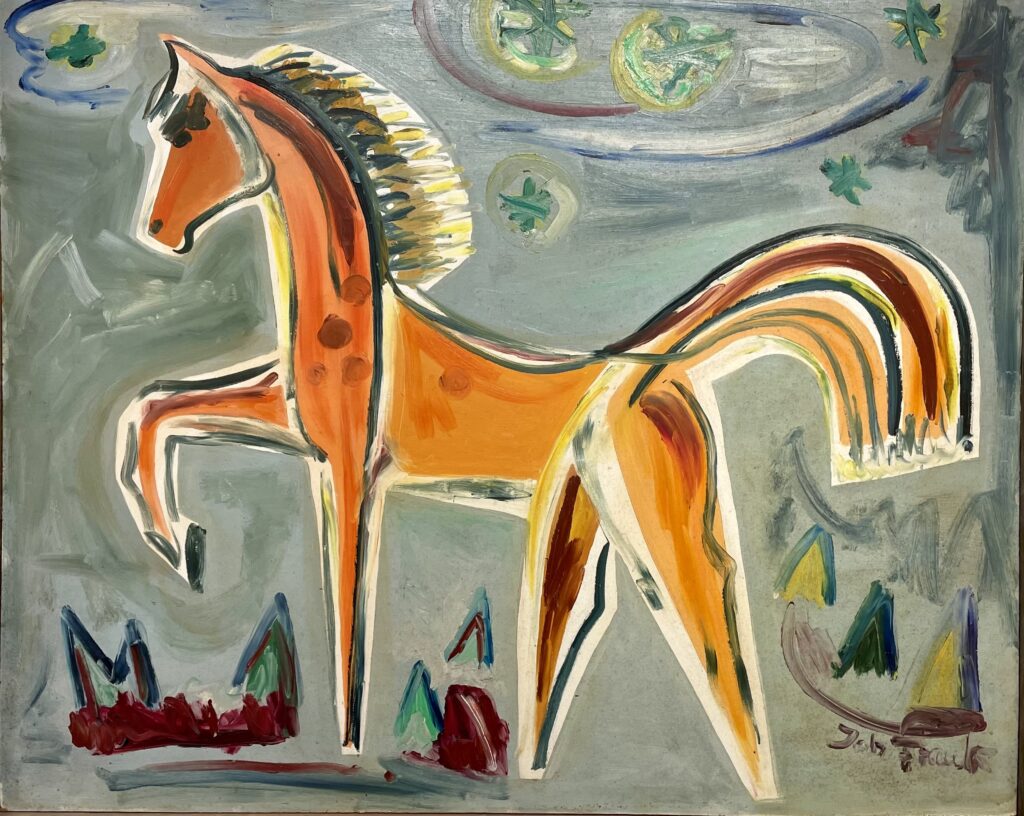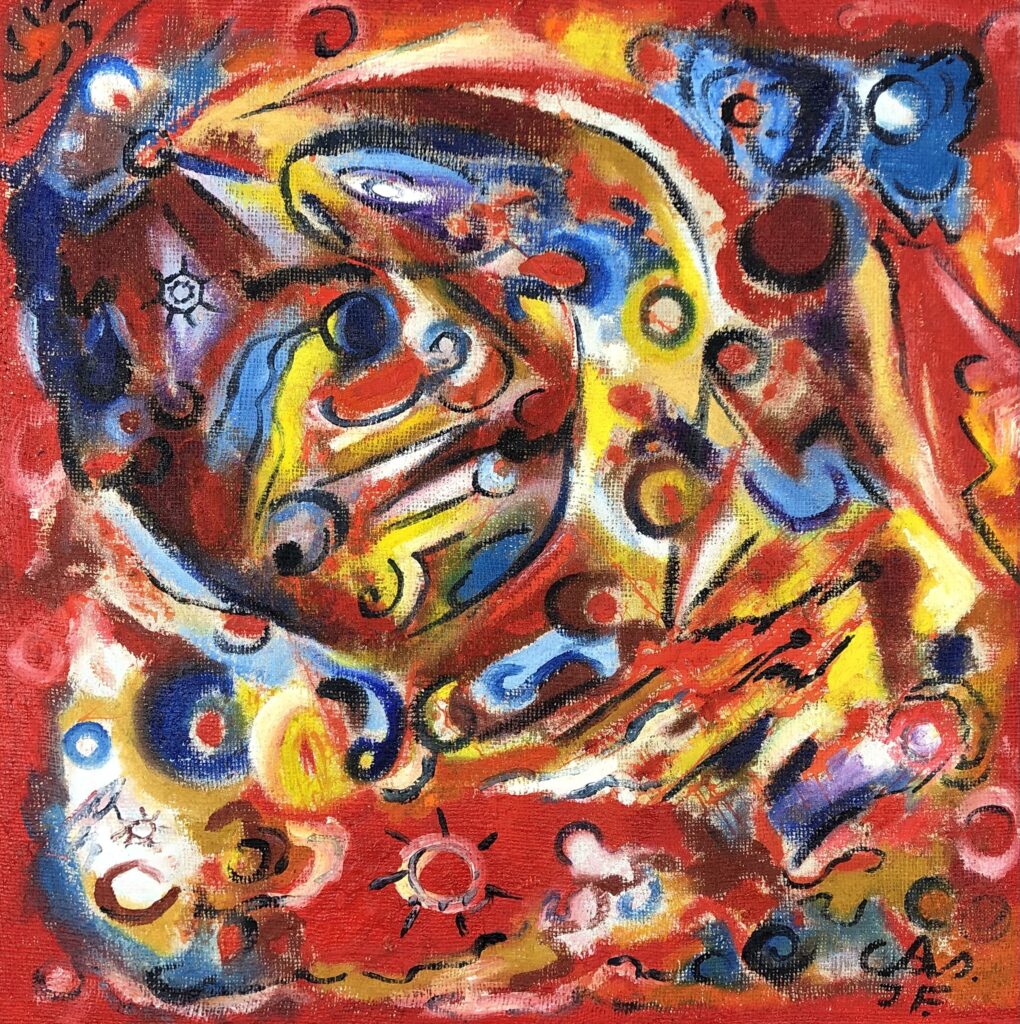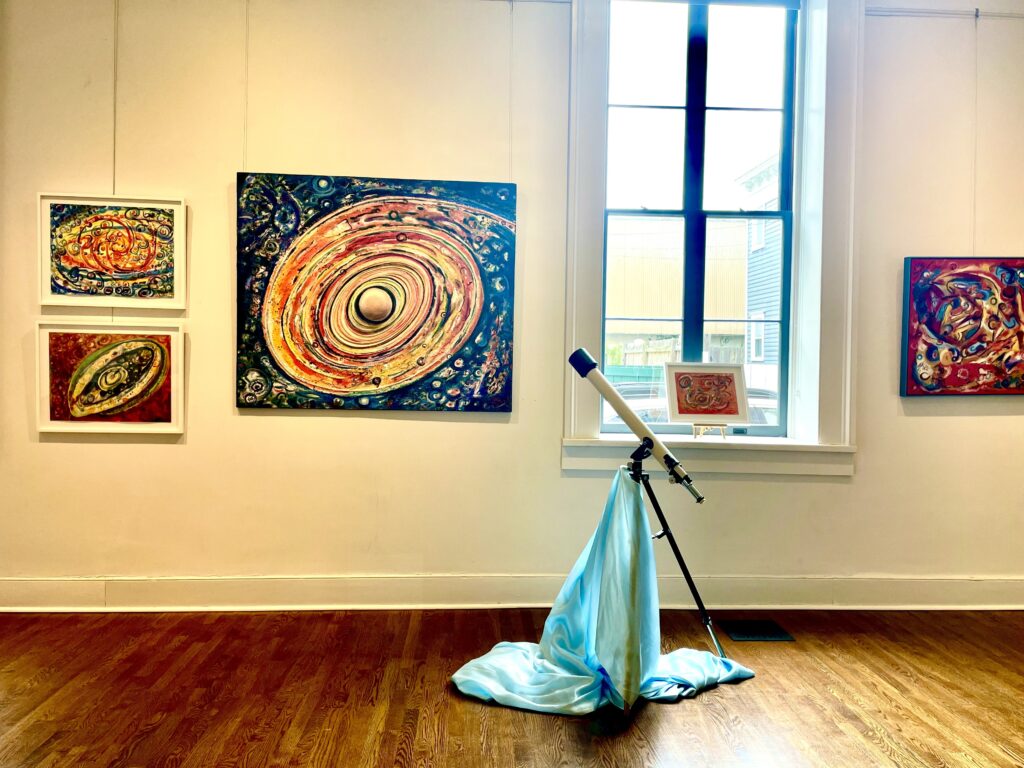
Hans Frank: Cosmic Art, a retrospective of the rediscovered artist Hans Frank at Hudson Hall, comprises over 50 paintings completed across five decades, with an emphasis on his cosmological abstractions. Co-curated by David Ebony (Snapshot of the Art World editor) and Jan Orluck, the exhibition takes its title from a logo, trademarked by the late artist, that was stamped on many of the works as something of a statement of purpose. Frank’s art was “cosmic” not only in its references to the vastness of outer space, but also in its spiritual ambitions and transcendental qualities expressed via form and color. To say that the paintings are kaleidoscopic is an understatement, yet they are informed by careful observation of the cosmos; according to Ebony’s catalogue essay, Frank grew more reclusive as he grew older, developing “a nightly habit of stargazing with high-powered telescopes”—a ritual that doubtless informed his studio practice. With the support of some early works and ephemera, Cosmic Art tells the story of a hermetic artist who indulged his muse with the attention and fidelity of a man truly in love.
Johannes “Hans” Frank was born in Silesia, Germany in 1935. After World War II, his family dispersed when forced to abandon their homestead as the area became part of Poland. Still a young child but already a proficient draftsman, Frank was sent to West Germany, where he would later study art and design at the Academy in Bielefeld. His sister, Renate, instead fled to the United States and found work in the Poughkeepsie area. By 1964, she had saved enough money to return to Germany to persuade her brother to join her in the States; Frank obliged, beginning what would be a lifetime of mutual devotion between the siblings. Neither married and, with a few exceptions, Renate was the lone witness to Frank’s artistic output. After the artist’s death of an undiagnosed illness in 1997, at age 62, Renate preserved her brother’s studio just as he left it.

In addition to Frank’s works from the 1940s, ’50s, and ’60s, the exhibition begins with a display case containing photographs and documents that offer a glimpse into the siblings’ lives: an image of Hans and Renate as children in a classroom, another of them as adults onboard a boat, and a flier for Frank’s art show at I.B.M. Gallery in Poughkeepsie—one of only two unsatisfying attempts at sharing his work with the public before he completely withdrew from the art world. Hung above these mementos is one of the show’s most dazzling paintings, Cosmic Horse (1967), wherein an exquisitely painted orange steed marches before a muted landscape spangled with stars and punctuated in the foreground with clots of plum-red pigment. Installed next to this work was the earliest piece in the show—a meticulous watercolor of the Frank family home and farm, ca.1946. Elsewhere the early works on display revealed the artist’s variety of stylistic forays, from a bleakly cartoonish military scene at the Berlin Wall to geometric abstractions of birds and fish.
Bridging the gap between Frank’s early and later work is Portrait Painter (1959), a most portentous item in Frank’s oeuvre. It depicts an artist at work on a Cubist-style portrait; outside his studio window, a multicolored orb hovers mysteriously. The artist stands disconnected from the painting at hand, apparently more interested in the spheroid than his canvas. The studio space, drawn quickly but skillfully, evidences Frank’s technique and his thorough comprehension of modernism. The looming orb predicts Frank’s departure, aesthetically and metaphysically, to outer reaches.

The focus of the exhibition gradually shifts to the “cosmic” paintings, with a second room dedicated solely to that body of work. At his best, Frank’s manner of pictorial organization recalls Kandinsky’s work from the early 1910s, but it is enacted with a more frenzied sense of color. Frank found his stride in the early ’80s with a particularly dynamic string of paintings that consolidate eons worth of astronomical events—planets compliant in orbit, meteoroids streaking across space, nebulae unfurling like smoke plumes, stars dying and spawning anew—into precariously balanced compositions, so mobile they can have a dizzying effect. It wouldn’t be difficult for paintings so rich in color and form to lose their autonomy when presented in concert, but the abstractions on view each possess a distinct character. Rhythmic in design and with an aspirational intent, Red Orbit (1984) shows a variety of colorful orbs ascending while also revolving according to myriad invisible vectors of gravity. Suns (1984) is rendered in the same palette of intense red hues but appears closer to reaching celestial homeostasis.
Later in his active years, Frank considered the role of scale and perspective in cosmic art—his place in the universe, if you will. Wondrous Planet (ca. 1987) is likely based on Earthrise, a famous photograph by William Anders taken during the Apollo 8 mission in 1968. Frank shows the earth with the moon’s surface in the foreground but embellished with nuanced textures and rhythmic patterns to emphasize in visual terms the notion that all of creation—the entire universe—centers on our home planet.

This exhibition was organized by Hudson Hall, where it was on view from August 3–September 22, 2024.
Matt Moment is an artist and writer from the Hudson Valley.